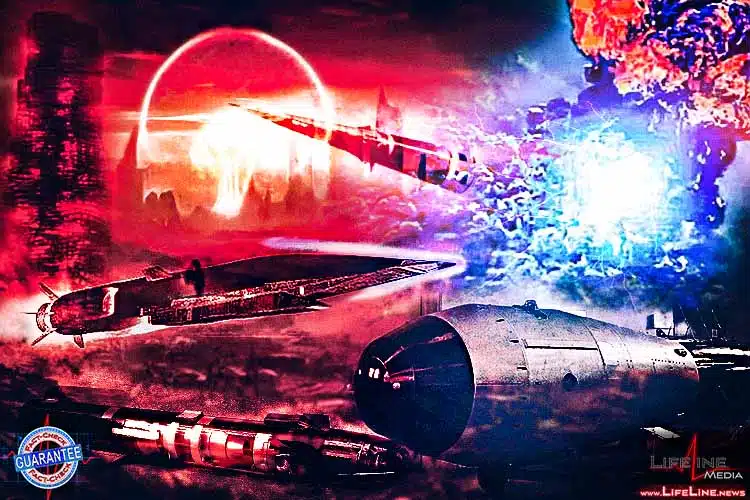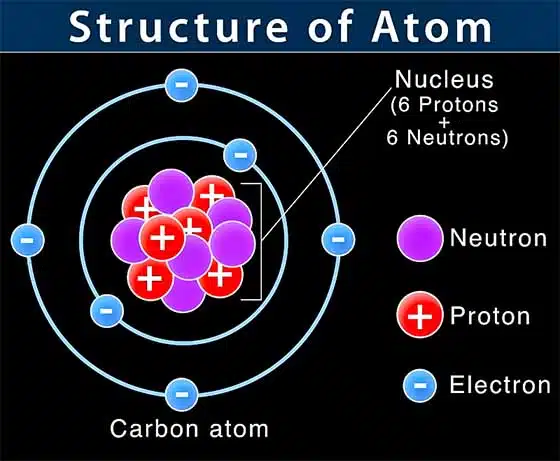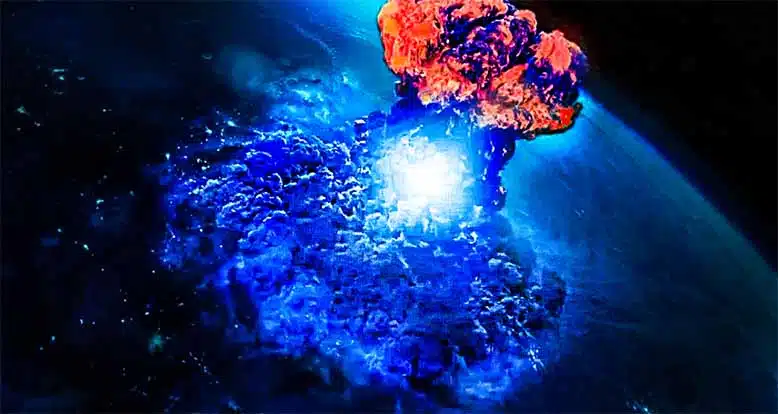Revealing the weapons that can end the world and the countries that possess them

Number 1 could transform our entire planet into a toxic wasteland for over half a century
| By Richard Ahern — The threat of nuclear war in 2023 is terrifying, but few of us understand the different types of nuclear weapons and the vast differences in their destructive power.
Sadly, since the escalation of the Ukraine-Russia war, the threat of World War III is very real. Putin has made numerous references to nuclear escalation, Ukraine is asking for more help from NATO countries, and there is evidence that Western countries are preparing for the worst.
While some weapons can destroy a city, others can vaporize a land mass, and one, in particular, can render the entire planet inhabitable for 50 years.
The largest nuclear bomb is not necessarily the most deadly — the fallout of a nuclear weapon is a critical factor, the blast itself may not be particularly powerful, but the radiation left afterward can affect a population for decades and have global effects.
While rating these weapons, we will also consider delivery systems — a weapon capable of destroying a country is of little use if it can’t be deployed effectively and penetrate nuclear defenses.
We will only talk about weapons that we know scientists can create with today’s technology in 2023 — we will not talk about theoretical weapons that might be possible a hundred years from now.
This article aims to lift the veil on the types of nuclear weapons possible in today’s world and give you a clear picture and comparison of the type of damage they can cause. The media often throws around phrases like “nuclear threat” — a broad term that fails to explain the plethora of devices possible.
So in this list, we will present the 5 most powerful weapons in the world in 2023 based on blast yield, radiological fallout, delivery method, and ability to penetrate defense systems.
Lightning Navigation
Table of Contents
How nuclear bombs work — background reading
“Nuclear” refers to anything related to the nuclei of atoms or the energy released when those nuclei are split or combined. You may be familiar with terms like “splitting the atom” or “atomic bomb,” they are all referring to nuclear reactions.
Nuclear energy is a vastly complicated subject; the scientists on the Manhattan Project who created the first atomic bomb were some of the greatest minds on the planet — a combination of chemists, physicists, and mathematicians.
Without some experience in those subjects, understanding the workings of nuclear weapons can be daunting. Still, it fundamentally boils down to the structure of an atom and two key processes.

Atoms, the fundamental units of matter, make up everything. Each atom represents a unique element on the periodic table. These elements are categorized based on the structure of their nucleus, which contains smaller particles: protons, neutrons, and electrons.
Most of the atom is actually empty space, but its core or nucleus is a dense cluster of protons and neutrons. Electrons orbit the nucleus, similar to how planets orbit a star.
We can now begin to understand the terminology. As we’re talking about nuclear reactions, we are only concerned with what happens in the atom’s nucleus — don’t worry about the electrons!
The number of protons in an atom defines the element. For instance, gold has 79 protons, carbon has 6, and hydrogen has 1. Therefore, changing the number of protons changes the element. So, if you removed a proton from gold, it would no longer be gold — it would now be platinum with 78 protons!
Besides hydrogen-1, an atom’s nucleus also has neutrons. Changing the number of neutrons doesn’t change the element but affects its properties. Elements with different numbers of neutrons are called isotopes.
The sum of protons and neutrons determines an element’s atomic weight — the more protons and neutrons, the heavier the element.
Nuclear reactions involve changes in the atom’s nucleus and require and release a lot of energy.
There are two types of nuclear reactions: fission and fusion.
Nuclear weapons also come in two types: those that use only fission and those that use a combination of fission and fusion.
Nuclear fission involves splitting a large nucleus, like uranium-235, into two smaller nuclei, releasing a lot of energy — this energy is what powers nuclear bombs and reactors.
On the other hand, nuclear fusion combines two small nuclei, like hydrogen isotopes, into a larger nucleus, like helium, releasing energy many times greater than fission.
Nuclear fusion is the holy grail of energy — the process that fuels our sun and the stars across the universe. Nuclear fission is the process used in all existing nuclear power plants. Scientists have been working hard to create a fusion reactor but sustaining the process has remained elusive.
However, scientists have harnessed nuclear fusion to create the second-generation nuclear weapon, also known as the hydrogen bomb or the thermonuclear weapon — a weapon many times more powerful than fission-only bombs.
The largest nuclear bomb in the world, which is on this list, is a fusion weapon. Its destructive power is theoretically limitless, constrained only by the available fuel. After all, nuclear fusion powers the sun and countless stars — what could be more powerful?
5 Neutron bomb — enhanced radiation warhead
The neutron bomb is a particular type of nuclear weapon designed to harm people more than buildings or equipment. Also known as an enhanced radiation warhead, the neutron bomb is uniquely dangerous because of its ability to destroy life precisely but leave surrounding structures intact, often giving a false illusion that it is more acceptable to use because it “appears” less destructive.
The neutron bomb has clear advantages in war as a tactical nuclear weapon, using it to wipe out an army without destroying the surrounding military equipment.
The detonation releases intense radiation that can travel through armor or deep into the ground. The inventor of the neutron bomb, Sam Cohen, theorized that if you took away the uranium casing of a hydrogen bomb, the neutrons released could kill enemies at great distances, even if they were hiding in buildings.
Nuclear weapons rely on an initial reaction that creates high-energy neutrons to trigger the further stages. These neutrons are usually contained within a uranium casing and reflected inwards to further the chain reaction of the explosion.
In contrast, in a neutron bomb, the uranium casing is removed, spreading the neutrons outwards, lowering the blast yield of the bomb but significantly enhancing the amount of lethal radiation.
Some experts thought it could be used as a way to negotiate against threats like Soviet missiles, lowering the risk of detonating the missiles by mistake during an attack.
The advantages of neutron bombs lie in their use as tactical nuclear weapons, as they allow for more precise targeting of military forces without the concern of causing significant civilian damage from the blast. However, this also raises a psychological concern, as their perceived acceptability could mean they are used with less forethought.
Here’s what’s so dangerous:
The neutron bomb could be the nuclear weapon that’s the catalyst for the use of much larger weapons, allowing governments to “dip their toes” into nuclear warfare — but before they know it, they’re destroying entire countries.
4 Hypersonic nuclear warhead
The next weapon is not measured by its blast radius or radiological fallout — but by its delivery method.
Because what good is a weapon if it can’t reach its target?
Hypersonic weapons are particularly bone-chilling because of their ability to carry nuclear warheads at speeds of over five times the speed of sound and maneuver rapidly on command.
A conventional intercontinental ballistic missile (ICBM) follows an arched path, launching into space and descending on its target guided by gravity. ICBMs are pre-programmed to hit specific targets — once in orbit, they cannot change their path.
Due to this predictable free-fall trajectory, defense systems can easily detect and intercept ICBMs.
In contrast, hypersonic missiles are equipped with jet engines and are remotely controlled throughout their entire flight. Additionally, they travel at lower altitudes, making early detection extremely challenging. Some can travel so fast that the air pressure in front of them forms a plasma cloud that absorbs radio waves acting like a “cloaking device” that renders them invisible to radar. As a result, many countries are racing to develop new defense systems that can detect incoming hypersonic missiles.
How fast can hypersonic missiles go?
To put it in perspective, the speed of sound, known as Mach 1, is about 760mph. Modern passenger planes typically travel slower than this speed (subsonic), usually up to Mach 0.8. Many will remember the Concorde supersonic plane that could fly at twice the speed of sound or Mach 2.
Speeds faster than Mach 5 are considered hypersonic, at least 3,836mph, but many hypersonic missiles can travel double that at around Mach 10!
In perspective:
A fast passenger plane flying from Russia to the United States would take roughly 9 hours — a hypersonic missile traveling around Mach 10 would arrive in the US in just 45 minutes!
Ready for the bad news?
Russia has bragged about its arsenal of hypersonic weapons capable of carrying various nuclear warheads. The mere thought of any weapon from this list being mounted on a hypersonic missile is terrifying.
3 The Tsar Bomba — hydrogen bomb
For raw blast power, the most powerful nuclear weapon ever created and tested was a hydrogen bomb developed by the Soviet Union called the Tsar Bomba.
Tsar Bomba, the biggest nuke in the world, weighing almost 60,000 pounds, was tested in a remote area called Mityushikha Bay on Severny Island in the Arctic Circle. On 30 October 1961, a plane called the Tupolev Tu-95 carried the device and dropped it from 34,000 feet.
A parachute was attached to slow down the bomb so the plane could escape, but the crew still had only a 50% chance of surviving.
The Tsar Bomba was a hydrogen bomb or a second-generation nuclear weapon with far greater destructive power using the process of nuclear fusion.
A standard fission reaction initiates a more potent secondary fusion reaction releasing vast amounts of energy. Fusion bombs utilize hydrogen isotopes known as deuterium and tritium as fuel, hence the name hydrogen bomb. However, modern weapons employ lithium deuteride in their design, but the principle is the same.
Nuclear fusion occurs when smaller atomic nuclei unite to create a larger nucleus, releasing significant energy. In contrast, nuclear fission, which is solely used in first-generation nuclear weapons, involves the splitting of a large atomic nucleus into smaller fragments. While fission also releases energy, it does not generate as much as fusion.
Fusion is the ultimate energy source:
Nuclear fusion powers the giant fireball that sustains all life on Earth — our sun. If we could harness the fusion process to continuously produce energy in power plants instead of our current fission plants, this would solve all the world’s energy problems!
To put it in perspective…
The Tsar Bomba explosion was more than 1,570 times stronger than the fission bombs dropped on Hiroshima and Nagasaki in Japan. The bomb caused a massive mushroom cloud, breaking the windows of houses in Norway and Finland almost 600 miles away. The blast’s shockwave circled the globe three times, with New Zealand recording an increase in air pressure each time!
The Tsar Bomba fireball was visible from over 600 miles away and was around 5 miles in diameter — large enough to engulf the entire Las Vegas Strip and more!
The Tsar Bomba was a weapon of pure power and raw destruction, the biggest bomb in the world ever tested. Its radiological fallout was designed to be minor, with testers being able to return to the site just two hours later with no risk to their health.
The Tsar Bomba demonstrated that with fusion technology, there was no limit to the destructive power possible — theoretically, the bigger bomb, the bigger the explosion.
The Soviet Union holds this record for creating and testing the most powerful weapon in the world. The remaining bomb casings currently sit in the Russian Atomic Weapon Museum in Sarov.
It’s important to note that when the Soviet Union collapsed, Russia inherited its entire nuclear arsenal!
2 Tantalum bomb — salted nuclear weapon
A lesser-known isotope that can be utilized in nuclear weapons is tantalum, a shiny gray metal recognized for its high density and melting point. A tantalum-based weapon employs an artificial radioactive isotope of the metal — one of only 35 known artificial radioisotopes.
Referred to as a “salted bomb,” tantalum has been investigated for its potential use as a salting material, which would be wrapped around a thermonuclear warhead.
What is a salted bomb?
“Salted bombs” are some of the deadliest weapons of all time, considered highly immoral and often called doomsday devices. The term salted is taken from the phrase “to salt the earth,” meaning to render the soil inhospitable to life. In ancient times the spreading of salt on the sites of cities conquered was a curse to prevent re-inhabitation of the area by stopping the enemy from farming the land.
A salted bomb uses heavy metals such as tantalum and is designed for maximum radiological fallout as opposed to blast radius — giving it the potential to cause atmospheric destruction across the planet.
The device’s detonation starts a fusion reaction that releases high-energy neutrons that mutate the tantalum-181 (the “salt”) to the highly radioactive tantalum-182.
The half-life of tantalum-182 is around 115 days, meaning the environment is left highly radioactive for many months after the explosion. Like other salted bombs on this list, the weapons fallout releases high-energy gamma rays capable of penetrating the thickest of walls and causing DNA damage to all life.
A weapon on par with tantalum is a zinc-salted bomb with similar properties, although tantalum produces slightly higher energy gamma radiation and is more researched in weapon design.
Who has a tantalum bomb?
No one has ever claimed possession of a tantalum-salted nuclear bomb.
However, in 2018 there were growing concerns that China was reviving the concept of the catastrophic tantalum weapon, originally conceived during the Cold War. Suspicion was sparked by state-backed experiments at a Chinese research facility. Scientists from the Chinese Academy of Sciences in Beijing reported their success in firing superheated beams of the radioactive isotope tantalum, suggesting the nation was taking a particular interest in the military uses of the tantalum.
Further details about China’s research with tantalum weapons remain unknown — such information would be considered a closely guarded state secret.
1 Cobalt bomb - the doomsday device

The cobalt bomb is the doomsday device — a weapon so destructive that it could end all human life on Earth, the worst nuclear bomb on this list.
A cobalt bomb is another type of “salted bomb,” a thermonuclear weapon designed to produce enhanced radiation. The bomb was described by physicist Leó Spitz as a device that should never be built but to demonstrate how nuclear weapons could reach a point that could destroy the entire planet.
The bomb consists of a hydrogen bomb surrounded by the metal cobalt, specifically the standard isotope of cobalt-59. Upon detonation of the device, the cobalt-59 is bombarded by the neutrons from the fusion reaction and converted to the highly radioactive cobalt-60. The radioactive cobalt-60 falls to the ground allowing wind currents to spread it across the planet.
How powerful is a cobalt bomb?
The radiation produced by a cobalt bomb remains in the atmosphere for many decades, longer than similar salted bombs using tantalum or zinc, rendering bomb shelters impractical.
Estimates suggest the atmosphere would remain radioactive for around 30-70 years, allowing enough time for wind currents to spread the isotope across the entire globe. Despite the radiation being long-lived, the half-life of cobalt-60 is short enough to produce intense lethal radiation. In fact, cobalt releases higher energy gamma rays than both tantalum and zinc — making the cobalt bomb the deadliest weapon in the world.
It gets more frightening:
The type of radiation released by a salted bomb like cobalt is especially deadly. Cobalt-60 releases high-energy gamma radiation capable of easily penetrating the skin and almost all obstacles.
Gamma rays are so penetrating that several inches of lead or many feet of concrete are required to block them.
The gamma rays produced by a cobalt bomb (and other salted bombs) can effortlessly pass through the human body, causing tissue and DNA damage and ultimately inducing cancer. The short-term effects of gamma radiation include skin burns, radiation sickness, and usually a painful death.
Does a cobalt bomb exist?
No country is known to have a cobalt nuclear bomb because such a weapon is considered highly unethical.
In 1957, the British tested a bomb using cobalt pellets as a tracer to measure the yield, but the test was considered a failure and never repeated.
Here’s the bad news…
In 2015, a leaked intelligence document suggested that Russia was designing a nuclear torpedo to create “wide areas of radioactive contamination, rendering them unusable for military, economic or other activity for a long time.”
A Russian newspaper speculated that the weapon was indeed a cobalt bomb. Although the language used in the document suggests the weapon may be using cobalt by design, it is unknown if the Russians intended to or have created a cobalt bomb. Of course, constructing or possessing a cobalt bomb would be highly classified as the international response would be outrage and panic.
The good news, perhaps, is that the creation of such a weapon by the Russians would be somewhat illogical, considering that the radiological fallout would eventually reach the Russian motherland.
Only a mad person or government would consider using such a weapon unless they had plans to colonize another planet or live in a deep underground bunker for the rest of their natural lives.
So, surely no one would be stupid enough to build a cobalt bomb — right?
We need YOUR help! We bring you the uncensored news for FREE, but we can only do this thanks to the support of loyal readers just like YOU! If you believe in free speech and enjoy real news, please consider supporting our mission by becoming a patron or by making a one-off donation here. 20% of ALL funds are donated to veterans!
This article is only possible thanks to our sponsors and patrons!

Join the discussion!
Be the FIRST to comment on ‘Nuclear Warfare: The 5 MOST POWERFUL Nuclear Weapons in the World’